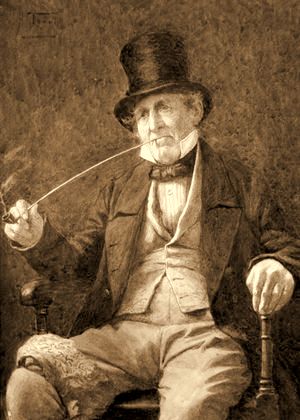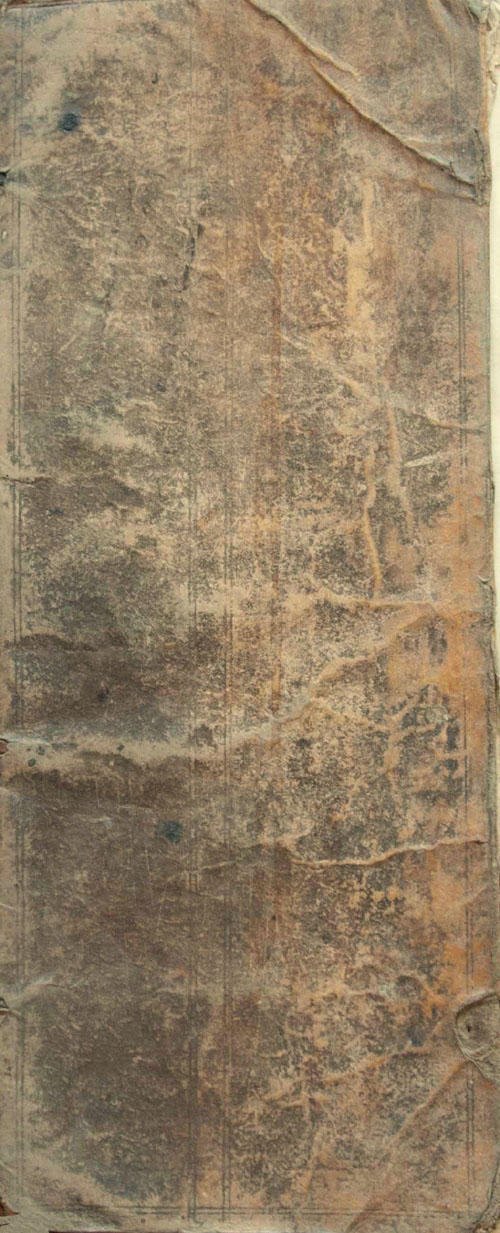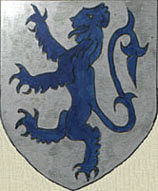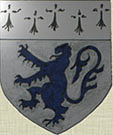|
Church Rates for the Parish of Skelton in Cleveland.
|
 The Church Warden and pipe of that name.
The Church Warden and pipe of that name.
|
Each Easter the Churchwardens of Skelton All Saints Parish Church elected two of their number to collect the Church Rates.
They were obliged to use that money according to set legal rules and traditions.
For centuries the Churchwardens were the only officials of local village government.
Local Government Boards began only in 1866 and elected County Councils 1888. Parish Councils in 1894.
Prior to this the organisation of local affairs was the responsibility of the Parish Church "Vestry".
The members of this body were the Churchwardens, local men of some financial means, who would at these times have been among the most literate and numerate, when many folk were neither.
Even then some of the handwriting and the variable phonetic spelling is, in places, difficult to decipher. The period covered shows a distinct improvement over the years.
Such people were co-opted on to a Committee that met in the Church Vestment room and hence were called the "Vestry".
In the years after the Norman Conquest all control had been in the hands of the local Lord and his Manor Court.
But gradually duties were transferred to the growing power of the Church and the above organisation.
The office of Churchwarden has been known since the 1200s.
Canon Law provided that the Church Wardens should be elected by joint consent, but if Minister and Parishioners disagreed, then the Minister chose one Warden and the Parishioners another.
The two men appointed were answerable to the Justices of the Peace at the County Quarter Sessions and had to pay a fee to be sworn in and to get out of their official duties.
Before they could legally act, they were required to swear an oath in Court -
“truly and faithfully to execute the office of Church Warden within the Parish, according to the best of their skill
and knowledge; and present such things and persons as to their knowledge were presentable, by the Laws Ecclesiastical of the Realm”.
|

Thomas Gainsborough's rendition of the Parish Clerk in the 18th Century.
|
The position no doubt carried much local status, but it was by no means a welcome job.
It was an unpaid position and had to be carried out on top of the hard effort demanded in those times to simply earn a living.
Church Parishes like Skelton often employed a Parish Clerk to perform much of the necessary administration.
Skelton village in these times was just the few buildings in the vicinity of the Castle, but the Parish covered a large area.
Rev John Graves, "History of Cleveland", published 1808 says:-
This Parish, comprehending the several townships of Skelton, Brotton, Skinningrove, Kilton, "Moresham" and Stanghow, is of considerable extent, stretching in length North to South upwards of eight miles and is about
six miles broad. It is bounded by the Parishes of "Lofthouse" and Easington on the East, by Guisborough and Upleatham and "Marsk" on the West, by Danby on the South, while its Northern limits border on the sea.
Apart from the village trades of Weaver, Shoemaker, Blacksmith etc people worked in agriculture, kept their own gardens and livestock and lived off the land.
CHURCH DUTIES.
The Church Wardens had to deal with regular Church attendance and correct religious demeanour, as well as seeing that the Vicar himself performed his duties properly.
In addition they had the responsibility for caring for the structure and fabric of the Church, the furnishings and contents, rental income, the bells, the Churchyard and much else;
paying the Parish Clerk, purchasing the communion bread and wine, washing the surplice, providing prayer candles and prayer books etc.
|
Another duty was the payment of a bounty to parishioners for catching vermin such as foxes, and in some parts of Britain polecats, hedgehogs and sparrows.
They were answerable for these duties to the Diocese of York, which sent out questionnaires from time to time to be signed and returned, e.g.:-
|

Skelton Parish by 1832. Brotton now a separate Parish.
|
Archbishop Thomson's Visitation Returns for the Diocese of York, 1865 -
[A Chalice and Patten [usually spelt with one t] in the following questions was the Cup and Tray, usually of precious metal, used in the Church services.]

THE CHURCHWARDENS AS OVERSEERS OF THE POOR.
In addition to these Church duties, the two men elected became ex officio the local Overseers of the Poor for that particular year.
Through the Middle Ages the Monasteries had provided much care for the poor and needy.
|

SkeltonChurch Rate Book.
Entry - "George Dixson, Church Warden for Skelton for year 1713 bought this book. Paid 4s 2d."
|
After their dissolution people who could not provide for themselves had nowhere to turn and were even found dead of starvation in the lanes of Britain.
The Poor Law Act of 1601 attempted a solution and placed responsibility for Poor Relief and much else on the local Parish.
This arrangement lasted until the creation of the Workhouse in 1834. The local Overseers had a minor role to play even after that.
The duties of the Skelton Churchwardens as Overseers of the Poor are covered -
Here and on the following pages.
LOCAL RATES.
All of the above provisions cost money.
Local people had therefore to pay a Poor Rate and a Church Rate.
Payment was legally compulsory. The 18th century saw the growth of religious ideas that did not conform to the Church of England, particularly Wesleyan Methodism.
In 1837, Parliament made two concessions to these Nonconformists, a more acceptable marriage ceremony, and the civil registration of births, deaths and marriages.
But the Parish Rate remained compulsory until 1868.
The Parish Clerk collected these rates according to a "Terrier", which was a Register of the property and land each Parishioner occupied.
It was based on a set annual charge for each house, plus a set amount for each Oxgang of land occupied.
The Oxgang was the amount of land a single Ox could plough. The exact area seems to have varied from place to place and is generally estimated to have been about the size of a football pitch.
Terriers seem to have remained constant for long periods, but there are examples of new ones being taken and paid for out of the Rates.
It was obviously not known what a future year's expenses would be and any overspend was paid for by the Wardens themselves and adjusted by the next year's Accounts.
Hence the need for men with some personal means.
Any parishioner could demand to see how his money was being spent.
Sometimes odd items, like payments to needy travellers, which normally appear in the Overseers of the Poor Accounts are recorded in the Church Rates accounts.
The Church Wardens decided amongst themselves which of them would draw up the annual accounts.
|
Occasionally, when the same Church Wardens continued in office for several years, they might present their accounts for a period covering more than one year.
When produced, these were “audited” and signed off by the Vicar and other members of the Vestry.
Any cash in hand or owing was passed over to the Church Wardens sworn in for the following year.
The Church Rate books for Skelton in Cleveland Parish covering the period 1714 to 1820 are held by Skelton Castle.
They should be preserved in the local Archives with open access to everyone.
The format of entry and content stays fairly consistent over the whole of the above period, with many interesting and revealing facts intertwined. Typical examples follow.
|
|



